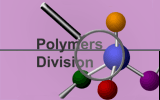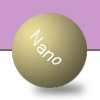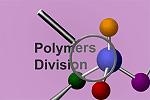| |
The Effect of an Organogelator on Bioactive Dental Composites
|
| |
Introduction
|
 |
Polymeric dental composites containing amorphous calcium phosphate
(ACP) are an important class of dental materials due to their
potential for remineralizing dental structures and their biocompatibility.
However, their application is limited by their poor mechanical
properties and shrinkage stresses introduced during polymerization.
Dibenzylidene sorbitol (DBS) is an organic molecule capable
of physical gelation in a wide variety of dental monomers by
forming three-dimensional networks. This research was aimed
at determining the effect of these three-dimensional networks
on conversion, shrinkage, and mechanical strength of bioactive
polymeric dental composites consisting of ethoxylated bisphenol-A
dimethacrylate (EBPADMA) and ACP.
|
| |
Experimental Approach
|
 |
| |
 Rheology to characterize DBS/EBPADMA gels
Rheology to characterize DBS/EBPADMA gels
Fourier-transform infrared spectroscopy to monitor conversion
Biaxial flexural tests to determine biaxial flexural strength
(BFS)
Three-point bend to measure flexural strength (FS) and modulus
(E)
Mercury dilatometry to measure polymerization shrinkage
Tensometer measurements to follow polymerization stress
Optical light microscopy to analyze fracture surfaces
Spectrophotometry to measure ion release of ACP composites
|
Results
|
 |
| |
|
|
| Composite sample |
Conversion (%) |
BFS (MPa) |
E (MPa) |
| 0 % DBS |
77.6 ± 0.3 |
59.5 ± 5.7
|
2949 ± 368 |
| 3 % DBS |
76.2 ± 0.5
|
83.0 ± 3.7 |
3161 ± 107 |
| 6 % DBS |
76.4 ± 2.2 |
69.6 ± 4.4
|
3266 ± 159
|
|
| |
Addition of DBS:
significantly reduces the number and size of pore defects and
may help improve dispersion of ACP
significantly increases the biaxial flexural strength
significantly reduces volumetric shrinkage and associated shrinkage
stress during polymerization
inhibits calcium ion and phosphate ion release
|
| |
Future Activities
|
 |
Studies on other gelators including gelatin or silicate
clays
Combinatorial approaches towards improved bioactive dental
composites
|
| |
Publications
|
 |
Organogelators and their application in dental materials,
Polymer Preprints (in press)
Reduced volumetric shrinkage of dental composites through
the addition of an organogelator, Chemistry of Materials (to
be submitted)


|
| |
Contributors
|
 |
Joseph M. Antonucci
Elizabeth A. Wilder
Newell R. Washburn
Kristen S. Wilson
Drago Skrtic
Janet B. Quinn
|
| |
| |
| |
| |
| |
| |
| |












